Ski shows and expos have been around since the 1950s. Over the decades, various developments in the ski and snowsport industry have contributed to fundamental changes within these shows and expos. Some of the greatest changes came with the launch of the EPIC Pass by Vail Resorts, Inc. In order to understand how the Epic Pass changed ski shows and expos, it is important to first understand how ski shows and expos looked before this development.
I had the opportunity to interview Bernie Weichsel, a member of the U.S. Ski and Snowboard Hall of Fame who first became involved with ski shows in the 1970s. His U.S. Ski and Snowboard Hall of Fame article begins as follows: “A self-described ‘ski bum,’ Weichsel helped launch freestyle; brought international guests to U.S. resorts; invigorated consumer ski shows; and passionately devoted himself to ski history.” During our interview, I asked Weichsel how he first got started in the business of ski shows. He shared that he began working with Harry Leonard, the man who founded ski shows in the 1950s, in 1970 and continued through 1979. After this time, Weichsel took over the business of ski shows and expos in 1981. A year later, Weichsel instituted a change that would revolutionize ski shows and expos.
Each year, Bernie Weichsel would present several ski shows in places like Denver, New York, and Boston. In 1982, operating under BEWI Productions, Inc., Weichsel brought in local retailers to each of his ski shows. Each show would have one primary retailer, which turned the ski shows into a marketplace where people could find great deals on gear. Weichsel described the retail sale as “the engine that drove the show.” An example of one of these retailers is Country Ski & Sport, Inc., who have been the vendors for the Boston Ski & Snowboard Expo. Their website, countryski.com, shares that “Country Ski & Sport, Inc. has provided its customers with exceptional service, discounts, and industry knowledge for over 50 years. In 2016, we became the exclusive retailer to the www.bostonskiexpo.com in Boston’s Seaport World Trade Center.” Athalon Sportgear, a sporting luggage manufacturer that attended the 2019 Boston Ski and Snowboard Expo, also wrote that Country Ski & Sport presented the area’s “most impressive ski and snowboard sale” as well as “offered their best pre-season savings on winter vacation packages, lift tickets and season passes.” Country Ski & Sport, Inc. would not only come to the ski expo and set up a huge retail center where attendees could purchase gear and other products at a discount, but would also generate excitement for the upcoming season by providing customers with deals that were only accessible at the ski expo. Thus, the retail center was the main driver of attendance at the ski expo.
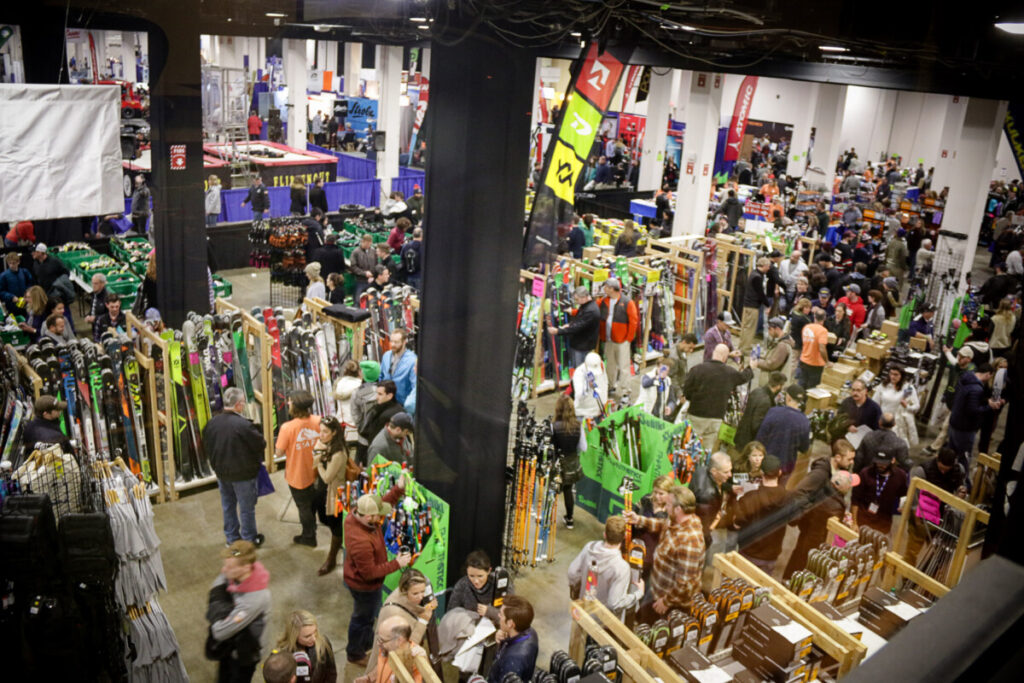
image courtesy of Clark Linehan
Weichsel compared selling floor space at a ski show or expo to selling advertisement space in a newspaper. The goal is to fill as much space as possible. Spots on the floor would be sold to individual ski resorts, and these resorts would then set up booths. These booths could contain attractions like mini games, giveaways, and discounted lift passes. I interviewed Kathy Benharris, the CEO of KB Fashion Productions, who is an expert in ski and snowboard fashion and has worked with ski shows and expos over the years. During this interview, Benharris provided the specific example of Stowe Mountain Resort, which would provide an exhibition of children’s activities, games where contestants could win prizes, and chefs that would take up 4,000 square feet at the Boston Ski & Snowboard Expo.
This system began to change in 2008 with the launch of the EPIC Pass by Vail Resorts, Inc. in 2008. In his 2013 article “Summer Ski Blitz” in TIME Magazine, Brad Tuttle described that the EPIC Pass “grants unlimited skiing at 12 U.S. mountains (half of which are in Colorado) for $689.” The EPIC Pass is a cost saver, it allows people to pay one price for access to multiple resorts. The EPIC Pass is further described on newschoolers.com: “Vail has cast its net over Northern California, Denver, Salt Lake, Boston, Minneapolis, Detroit, Chicago, and Vancouver.” Vail’s EPIC Pass has resulted in the company buying up multiple resorts and mountains around the world. This had a large impact on ski shows because it meant fewer resorts would come to the show. Vail would only need one booth for their EPIC Pass to represent all of their resorts. This meant that floor space previously occupied by individual resorts was now vacant. Stowe Mountain Resort is a great example of this because after it was acquired by Vail and therefore included in the EPIC Pass, Stowe never returned to the Boston Ski & Snowboard Expo. This is but one example of how the EPIC Pass opened up floor space at ski shows. Open floor space also means less revenue from resort advertisement at ski shows, which Bernie Weichsel shared was at one point a concern for the future of ski shows. Weichsel also suggested that this concern was particularly exacerbated because Vail does not place much emphasis on advertising outside of the EPIC Pass. To look into this further, I consulted the financial statements for Vail Resorts, Inc. for 2008 and 2022 provided by the United States Securities and Exchange Commission. In doing so, I found that in 2008, the year the EPIC Pass was started, Vail spent about 17% of their income on advertising. In 2022, they spent about 13%. This 4% decrease could suggest that Vail has lowered their advertising costs as the EPIC Pass has grown. This decrease in overall advertising expenditure would likely mean that less money was spent on promoting Vail at events like ski shows.
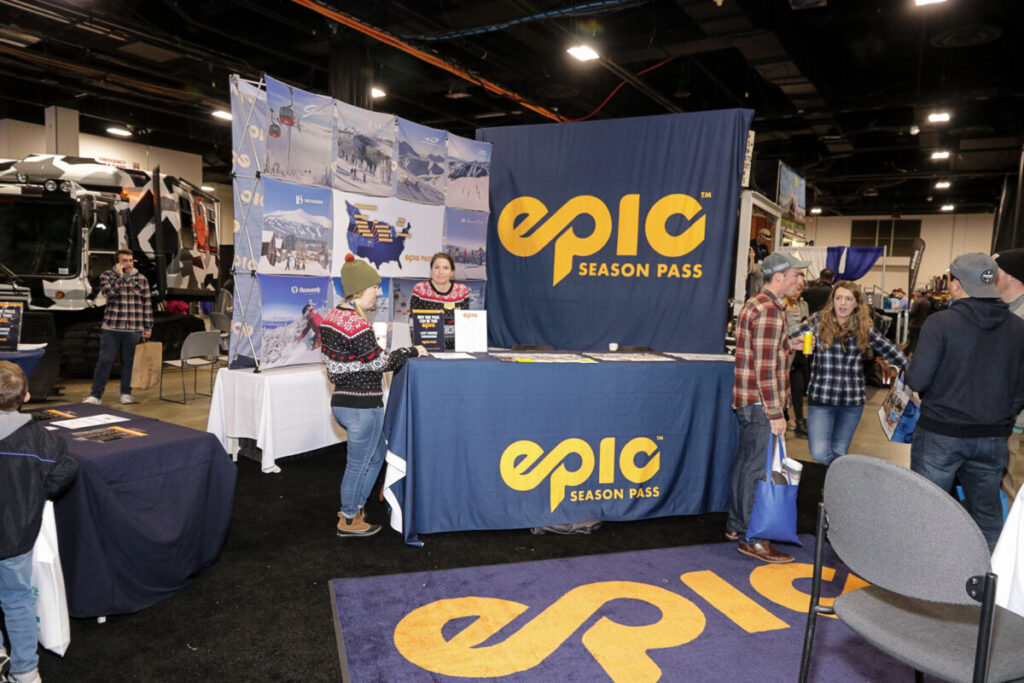
The loss of filled floor space and revenue from resorts at ski shows was a radical change that posed a problem, but how was it solved? Both Bernie Weichsel and Kathy Benharris said that the empty floor space was filled with entertainment as well as with companies that shared a similar consumer base to that of skiing and snowboarding shows. For instance, many people interested in skiing and snowsports are also interested in vehicles like SUVs. In “The Riddle of the Sport Utility Vehicle,” a chapter of Auto Mania: Cars, Consumers, and the Environment, Tom McCarthy writes that “A far smaller group of outdoor enthusiasts bought SUVs as specialized recreational vehicles and, indeed, often took them off-road.” Those involved in skiing and snowsports are likely to be involved in other outdoor activities. SUVs are the perfect vehicles for people with those interests. So, some of the floor space at ski shows was filled with car companies that sold SUVs. For example, both Jeep and Subaru have set up an exhibition at the Boston Ski & Snowboard Expo in the past. Bernie Weichsel also shared that Subaru sponsored the Boston Ski & Snowboard Expo in 2019.

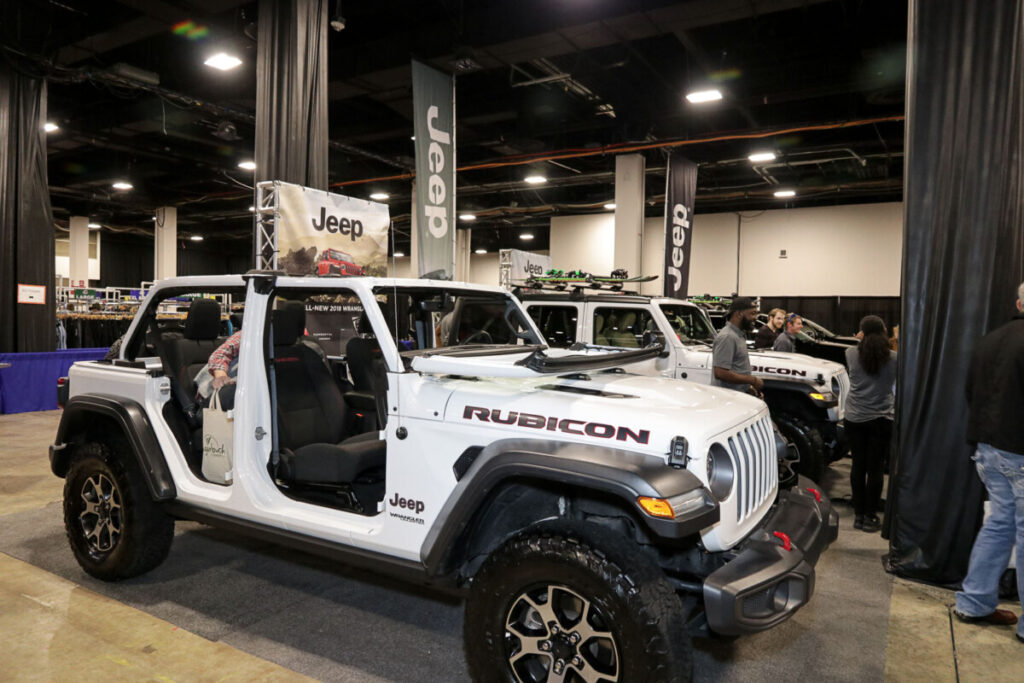
Kathy Benharris explained that this was also a time in the ski industry where the “mature female” was beginning to be recognized. The industry is realizing that they are the ones who make a lot of the vacation decisions and plans for families. However, many of them stop skiing once they have children. One company that filled empty floor space while seeking to address this problem is Her Turn at the She ShedTM. According to kbfashionproductions.com, “Her Turn at the She ShedTM is a lodge themed programming area where the primary focus is to provide female skiers and boarders of all ages and abilities with information that will help them maximize their winter alpine experience.” This company is directly involved with the ski industry, so it would make sense for it to be present at the ski expo and to replace the floor space previously occupied by resorts. Another way the ski shows would fill floor space is through entertainment like indoor ski and snowboard parks, which are a somewhat new development. According to “The Indoorisation of Outdoor Sports: An Exploration of the Rise of Lifestyle Sports in Artificial Settings” by Maarten Van Bottenburg and Lotte Salome, “Outdoor lifestyle sports, such as surfing, skating, rowing, alpine skiing, biathlon, cross‐country skiing, snowboarding, mountain climbing and even ski jumping and parachute jumping, which used to be exclusively practised in a natural environment of mountains, oceans, lakes, rivers and the air, are now being offered by entrepreneurs in safe, predictable and controlled indoor centres.” Ski shows have been able to use the open space in their floor plans to help expand the sport in new, innovative ways. These innovations provide a unique way of engaging in the sport that some people might otherwise find dangerous or nerve racking. So, instead of panicking, the organizers of the ski shows solved the problem of empty floor space through various creative solutions, and the ski shows benefitted. In his interview, Bernie Weichsel said that the 2019 Boston Ski & Snowboard Expo was the best year for revenue. So, instead of empty floor space being the downfall of ski shows, it actually allowed for diversification of the attractions offered at ski shows and has been economically advantageous.
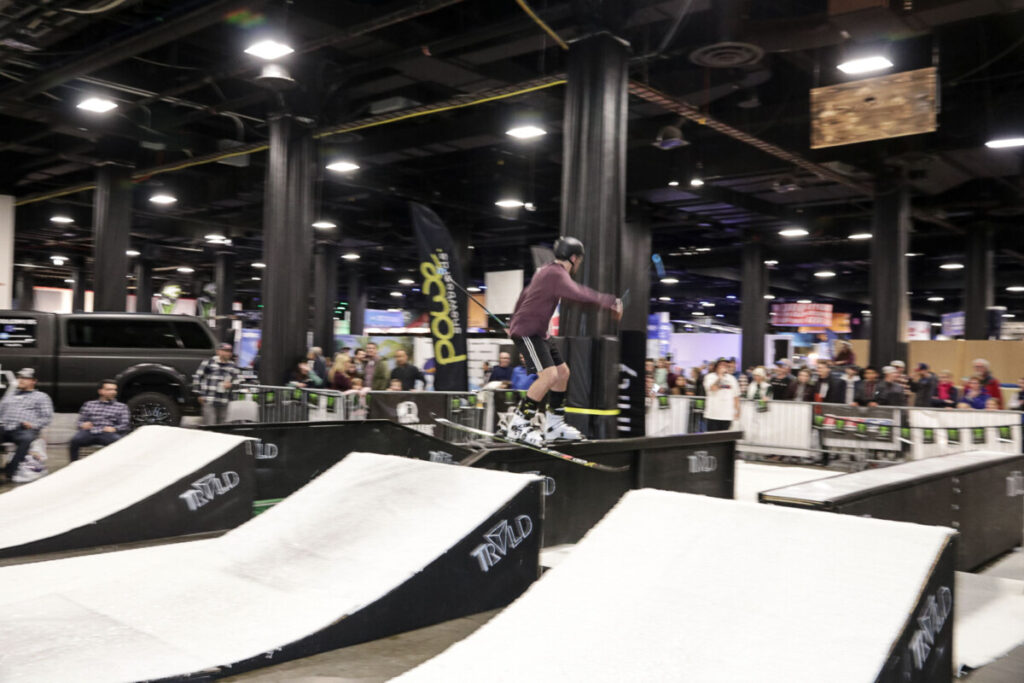
The emergence of Vail Resort Inc.’s EPIC Pass, and other mega passes like it, resulted in some big changes for the ski industry. Ski shows and expos certainly felt this change very heavily. Yet, this change has not necessarily been a bad one. While ski shows might not be as filled with lots of different resorts as they once were, they have gained the opportunity to offer more products, services, and experiences to their attendees. This has also increased the confidence of organizers in the adaptability of their shows. Take the Outdoor Retailer trade show, which is, according to Thomas Peipert and James Anderson of the Associated Press, facing threats of boycotts due to environmental concerns if it returns to Salt Lake City. Even with the presence of these threats, the event planners still plan to hold the show in Utah, which shows that the organizers believe that they will have enough vendors present regardless of a boycott. Despite the original concerns, the changes within the ski industry have allowed for ski shows and expos to increase their revenue and their adaptability, making it a favorable situation for both the producers and consumers.
Acknowledgements
I would like to thank Kathy Benharris and Bernie Weichsel for sharing their insight, experience, and knowledge about the ski show industry. I would also like to extend my gratitude to Clark Linehan for providing the photographs used in this post, as well as to Brenda Doll for sharing additional images.
Works Cited
Athalon Sportgear. “38TH ANNUAL BOSTON.COM SKI & SNOWBOARD EXPO NOV 14—17, 2019.” Accessed April 28, 2023. https://www.athalonsportgear.com/bostoncom-ski–snowboard-expo-2019.html.
Bottenburg, Maarten van, and Lotte Salome “The Indoorisation of Outdoor Sports: An Exploration of the Rise of Lifestyle Sports in Artificial Settings.” Leisure Studies 29, no. 2(2010): 143-160, DOI: 10.1080/02614360903261479 https://www-tandfonline-com.proxy.library.emory.edu/doi/full/10.1080/02614360903261479?scroll=top&needAccess=true&role=tab&aria-labelledby=full-article.
Country Ski & Sport Inc. “About.” Accessed April 28, 2023. https://www.countryski.com/ski-expo/about.
Interview with Bernie Weichsel, April 21, 2023.
Interview with Kathy Benharris, April 12, 2023.
KB Fashion Productions. “Her Turn at the She ShedTM.” Accessed April 28, 2023. https://www.kbfashionproductions.com/herturn.
McCarthy, Tom. Auto Mania: Cars, Consumers, and the Environment. New Haven: Yale University Press, 2007. http://www.jstor.org/stable/j.ctt5vktpk.16.
Newschoolers. “How Vail’s EPIC Pass Changed the Game.” Accessed April 28, 2023. https://www.newschoolers.com/news/read/How-Vail-EPIC-Pass-Changed-Game.
Peipert, Thomas, and James Anderson “Outdoor Retailer Trade Show Returns to Utah in 2023, Despite Boycott Threats.” Associated Press, Mar 24, 2022. https://www.stgeorgeutah.com/news/archive/2022/03/24/outdoor-retailer-trade-show-returns-to-utah-in-2023-despite-boycott-threats/#.ZFmb83bMJD8.
Tuttle, Brad. “Summer Ski Blitz.” TIME Magazine 182, no. 9 (New York), August 26, 2013. https://search-ebscohost-com.proxy.library.emory.edu/login.aspx?direct=true&db=a9h&AN=89735034&site=ehost-live&scope=site.
United States Securities and Exchange Commission. “Vail Resorts Inc. 2008.” Accessed April 28, 2023. https://www.sec.gov/Archives/edgar/data/812011/000081201108000026/form10k.htm#finstatements.
United States Securities and Exchange Commission. “Vail Resorts Inc. 2022.” Accessed April 28, 2023. https://www.sec.gov/ix?doc=/Archives/edgar/data/812011/000081201122000040/mtn-20220731.htm.
U.S. Ski and Snowboard Hall of Fame. “Bernie Weichsel.” Accessed April 28, 2023. https://skihall.com/hall-of-famers/bernie-weichsel/.
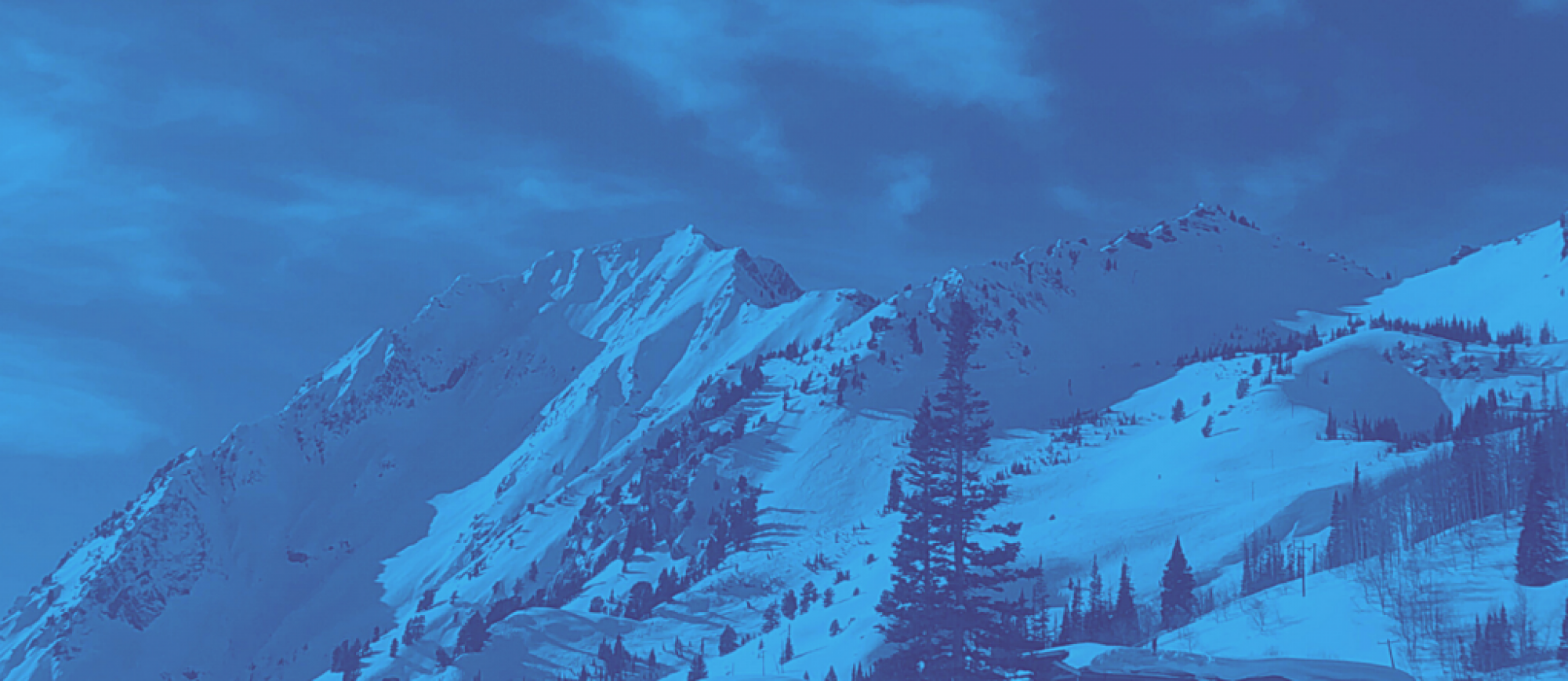
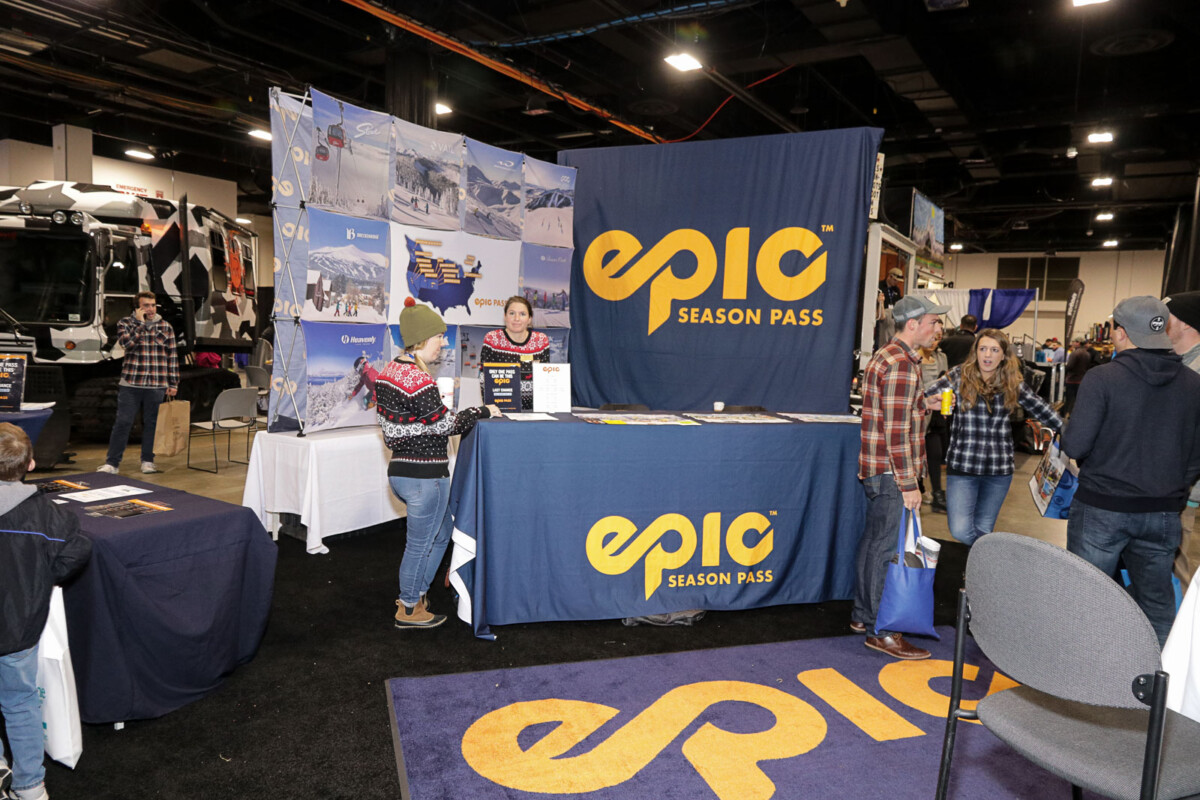
Nice article. I attended a couple of the DC shows when held in Ballston Commons. I think the history stretches back even further:
1888 Denmark Copenhagen Nordic Exhibition
1892 France Grenoble International Alpine Exposition
1894 Austria Mürzzuschlag Winter Sports Exhibition, January 5 – 10
1910 Germany Triberg International Winter Sports Exhibition
1934 Minneapolis Northwest Sportsmen’s Show
1935 Boston Garden National Winter Sports Expo, December
1936 NY Madison Square Garden NorAm Winter Sports
1938 OH Cincinnati Music hall 10 day sport expo
1938 UK Winter Cavalcade at Earls Court
1939 CA Berkeley Snow Show
1946 WA Seattle Civic Auditorium
1962 WA Seattle Civic Center Nordic Fest